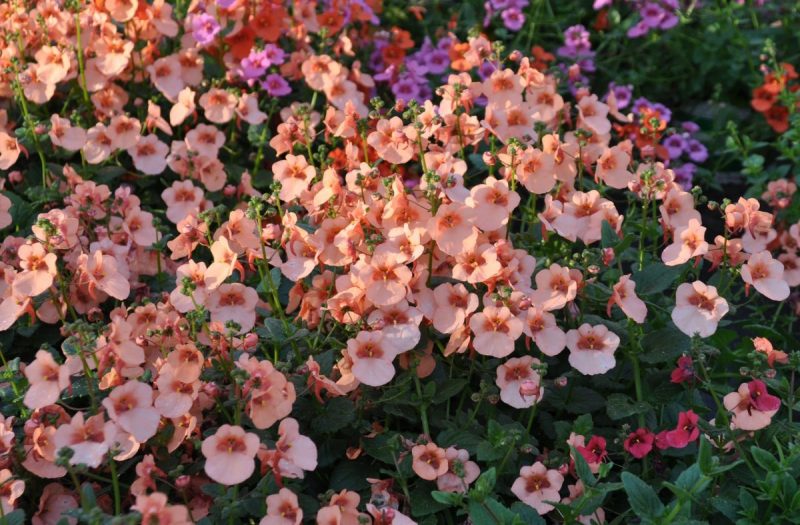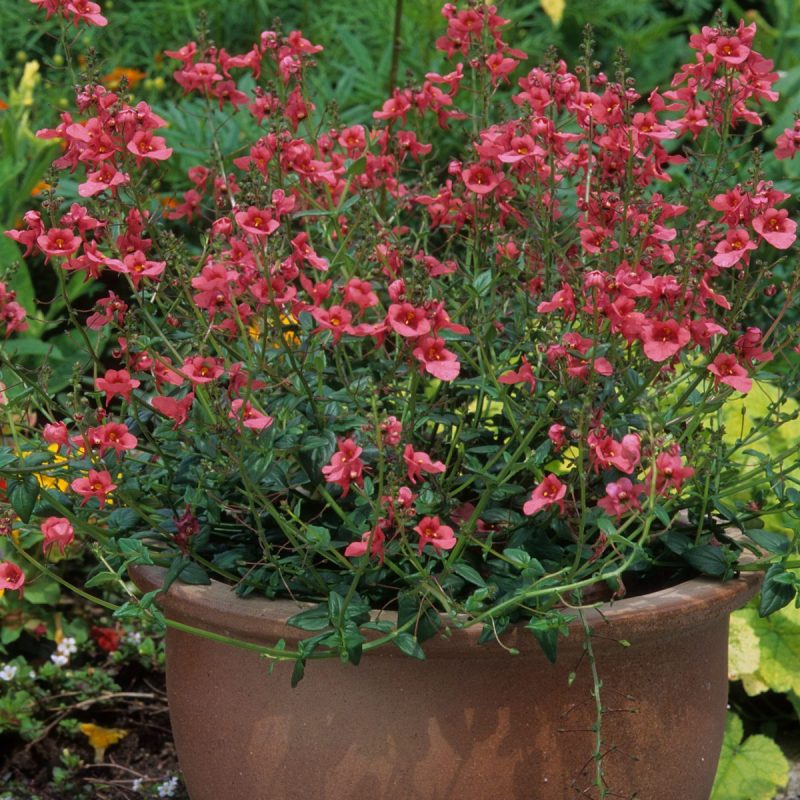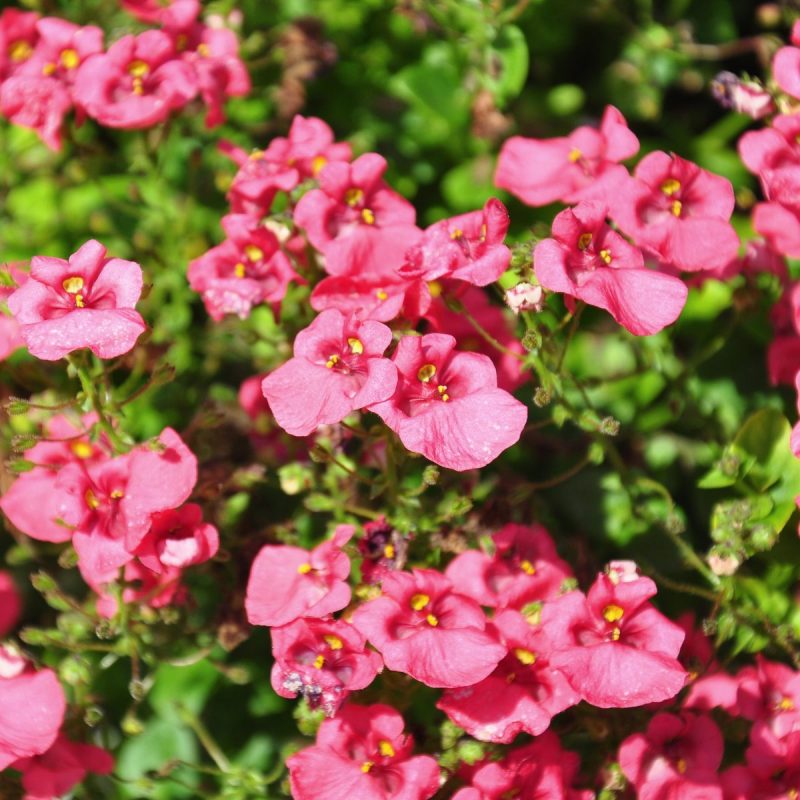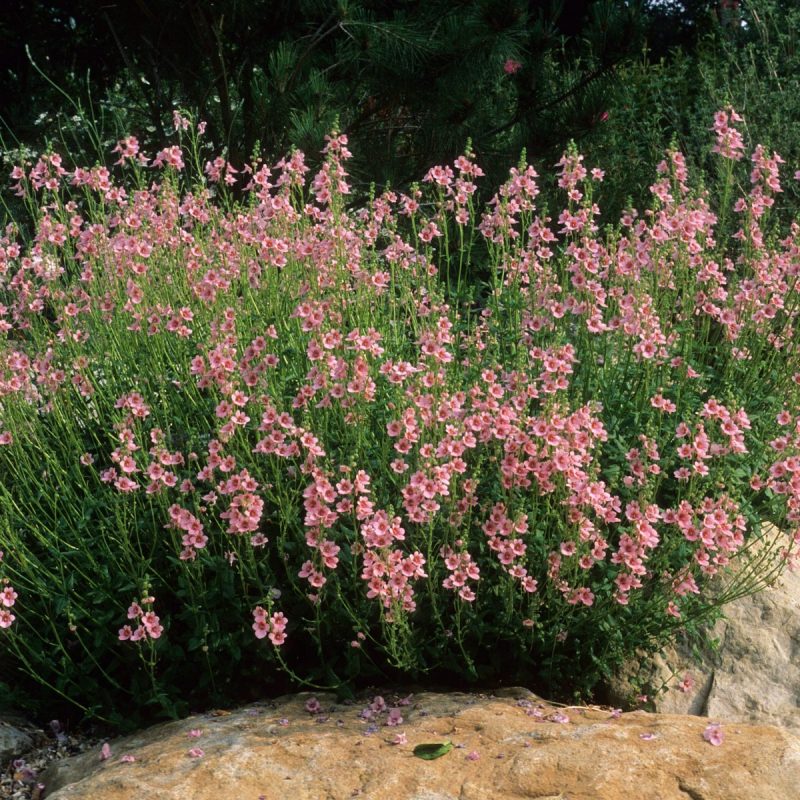Diascia, planting guide and care work

Diascia (Diascia spp.) is a perennial or annual plant, which is part of the Scrophulariaceae family, originating from South Africa. It stands out for its tubular, numerous, variously colored flowers. They are arranged in terminal racemes. The plant blooms at the beginning of summer, and the flowers last until autumn. The leaves are simple, cordate, light green. Most species of Diascia are short and do not reach more than 45 cm in height.
Diascia is cultivated for the beauty of its flowers in gardens, terraces, rockeries, directly in the ground or in flowerpots and hanging baskets.
Diascia – species and varieties
- D. barberae ‘Blackthorn Apricot’: with pale pink flowers;
- D. integerrima ‘Coral Canyon’: with light pink flowers;
- D. personata: a species with pink flowers that can reach up to 1.2 meters in height;
- Diascia ‘Picadilly’: with large white flowers;
- Diascia ‘Flirtation Orange’: with orange flowers;
- Diascia ‘Whisper White’: with white flowers.



Environmental conditions
Light. For abundant flowering, the plant needs direct sunlight. During the summer, when the temperatures are high, it needs partial shade, especially in the afternoon.
Temperature. It prefers medium temperatures, but it tolerates lower temperatures as well. Excessive heat can cause the flowers to wither, but they will recover as soon as the plants are watered and the temperature begins to drop slightly.
Soil. It needs a slightly acidic soil (pH 6.0-6.5), well drained and fertile.
Diascia – care
Watering. The plants are watered regularly, but excessive moisture should be avoided. For plants grown in flowerpots, watering can be done when the first cm of the substrate is dry. It is also important that the flowerpot has holes for water drainage.
Fertilizing. It can be fertilized periodically, using a balanced, slow-release fertilizer, specially formulated for flowering plants.
Recommended products
-
You can find products on a different store
Change Store -
You can find products on a different store
Change Store -
You can find products on a different store
Change Store -
You can find products on a different store
Change Store -
You can find products on a different store
Change Store -
You can find products on a different store
Change Store -
You can find products on a different store
Change Store -
You can find products on a different store
Change Store -
You can find products on a different store
Change Store -
You can find products on a different store
Change Store -
You can find products on a different store
Change Store -
You can find products on a different store
Change Store -
You can find products on a different store
Change Store -
You can find products on a different store
Change Store -
You can find products on a different store
Change Store -
You can find products on a different store
Change Store -
You can find products on a different store
Change Store -
You can find products on a different store
Change Store -
You can find products on a different store
Change Store -
You can find products on a different store
Change Store -
You can find products on a different store
Change Store -
You can find products on a different store
Change Store -
You can find products on a different store
Change Store -
You can find products on a different store
Change Store
Propagation. It is propagated by cuttings or seeds. In regions with a cold climate, where Diascia is grown as an annual plant, the best time for propagation is spring.
Diseases and pests
Diseases are not a problem for this plant. Instead, it can be attacked by pests such as snails and slugs.
Recommended products
-
You can find products on a different store
Change Store -
You can find products on a different store
Change Store -
You can find products on a different store
Change Store -
You can find products on a different store
Change Store -
You can find products on a different store
Change Store -
You can find products on a different store
Change Store -
You can find products on a different store
Change Store -
You can find products on a different store
Change Store -
You can find products on a different store
Change Store -
You can find products on a different store
Change Store -
You can find products on a different store
Change Store -
You can find products on a different store
Change Store -
You can find products on a different store
Change Store -
You can find products on a different store
Change Store -
You can find products on a different store
Change Store -
You can find products on a different store
Change Store -
You can find products on a different store
Change Store -
You can find products on a different store
Change Store -
You can find products on a different store
Change Store -
You can find products on a different store
Change Store -
You can find products on a different store
Change Store -
You can find products on a different store
Change Store -
You can find products on a different store
Change Store -
You can find products on a different store
Change Store
Additionally:
- The lack of flowers is caused by the absence of nutrients or by insufficient light;
- To stimulate the branching and flowering of the plant, it is recommended to pinch the tips.















































































































































































































































































































































































































































